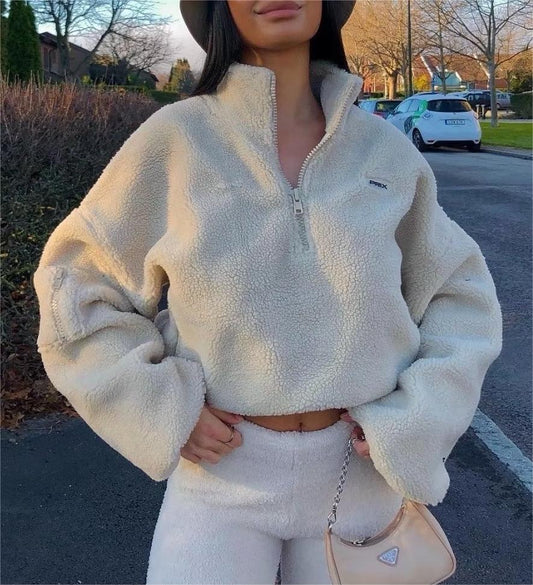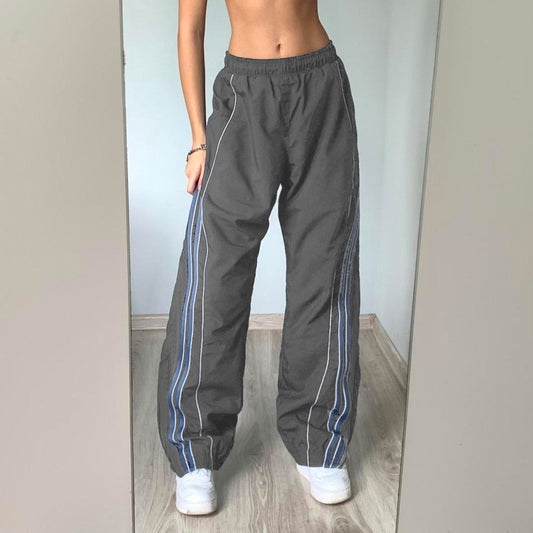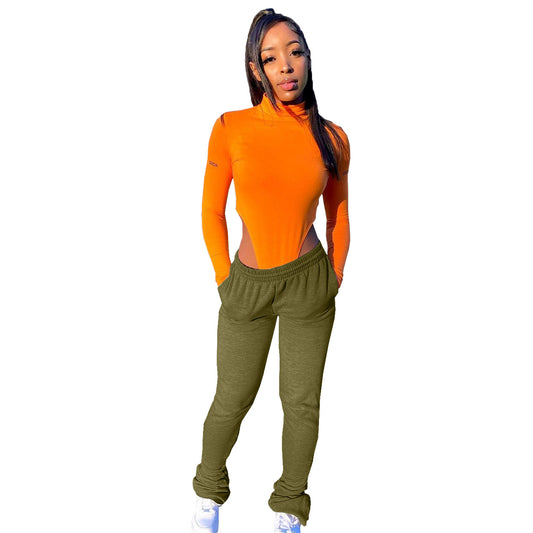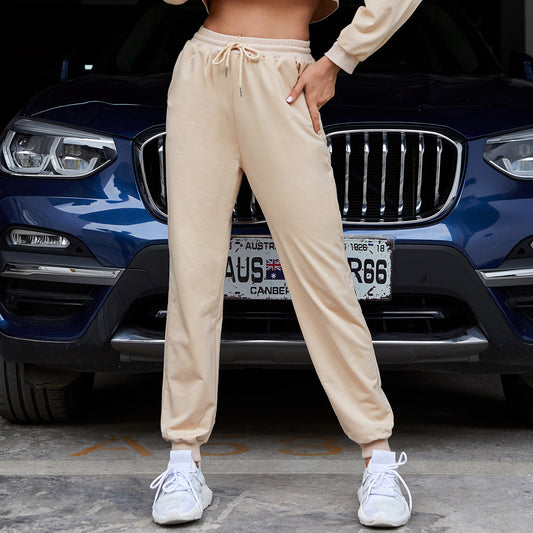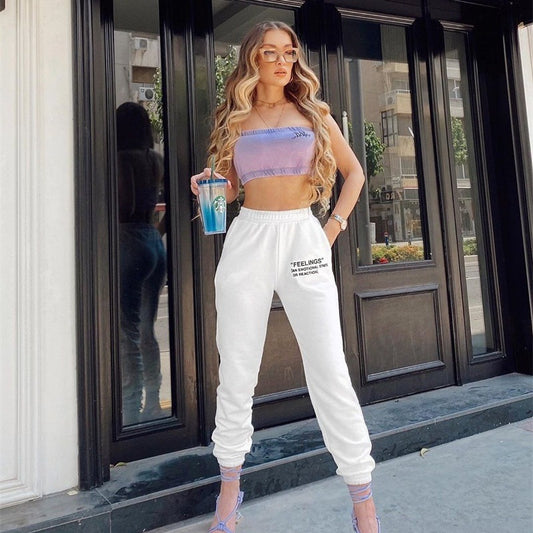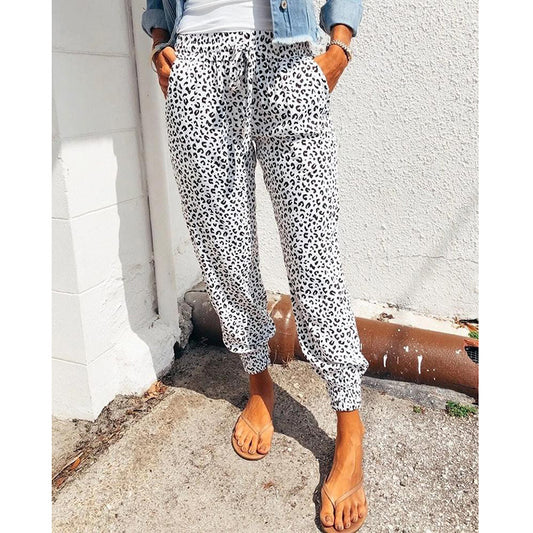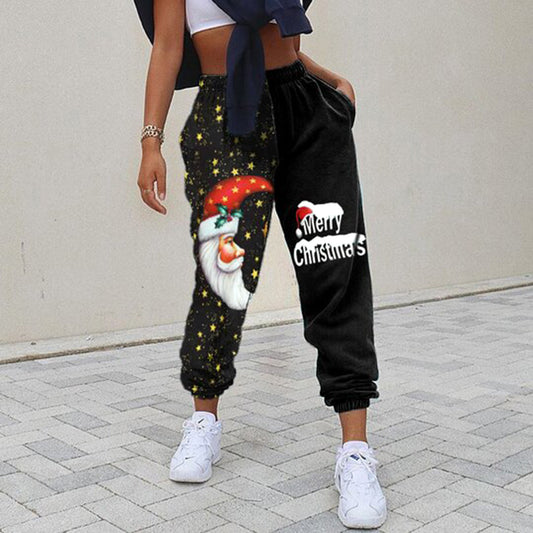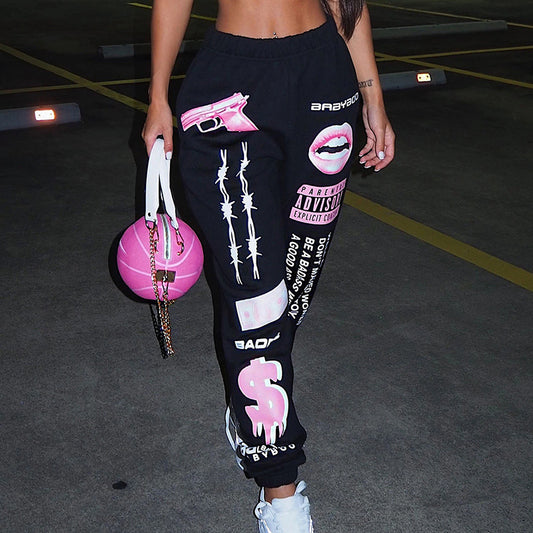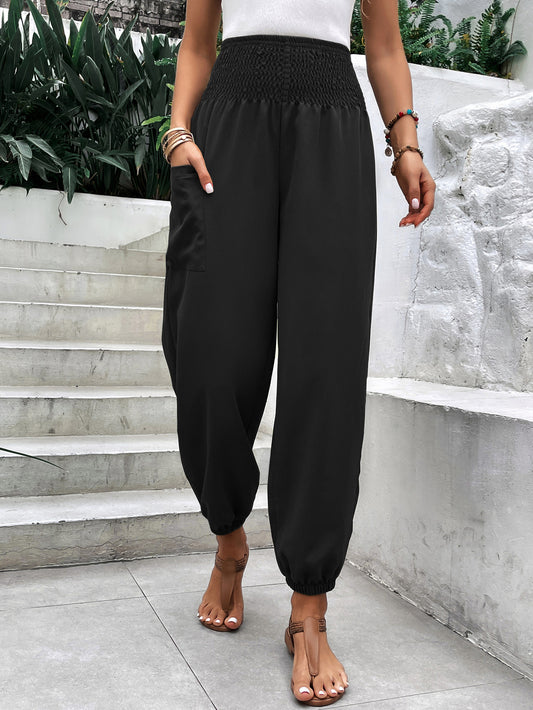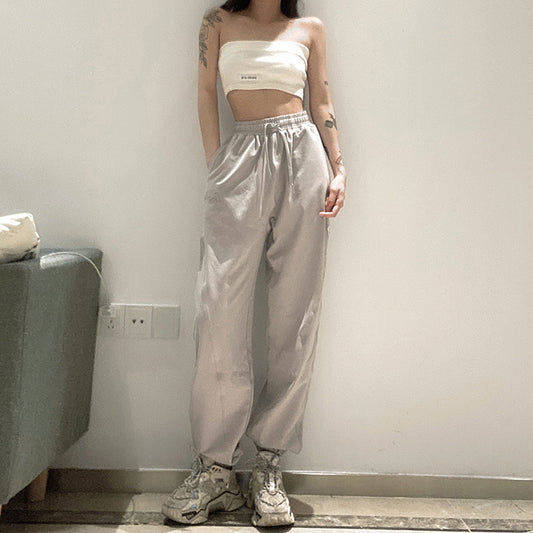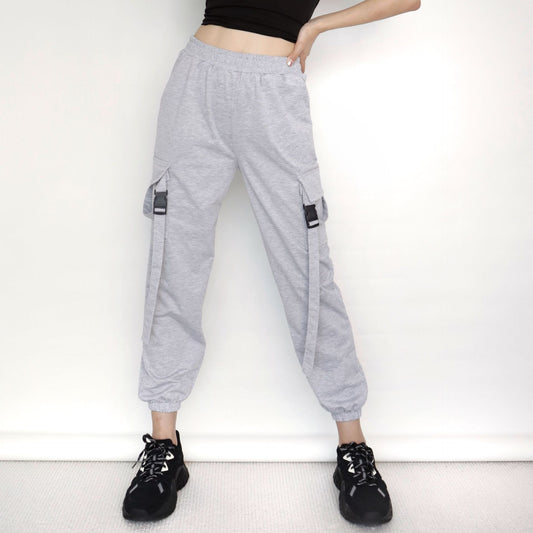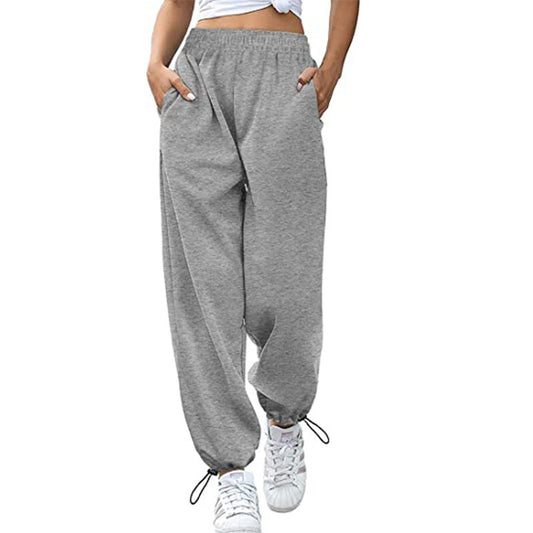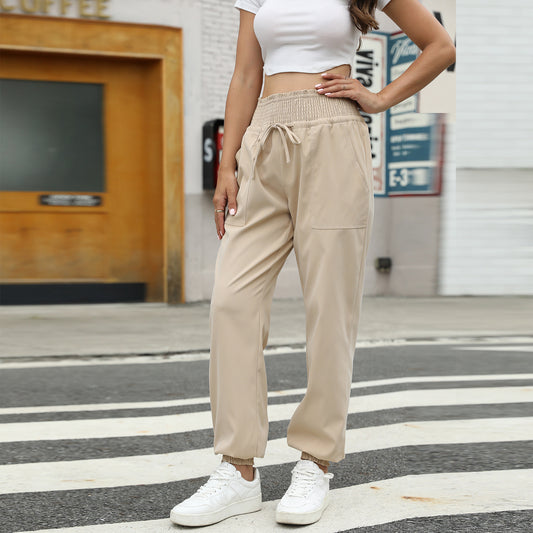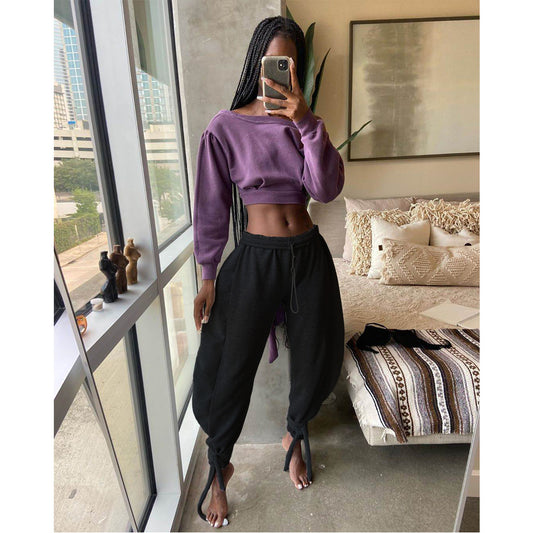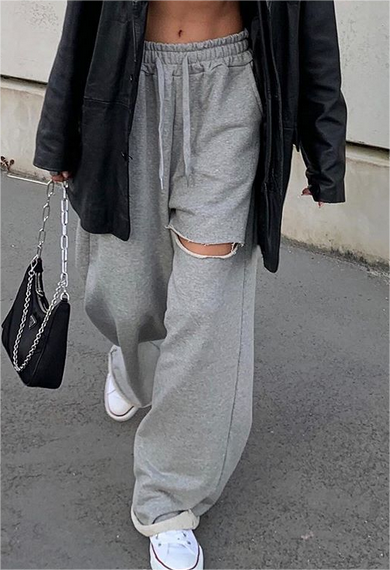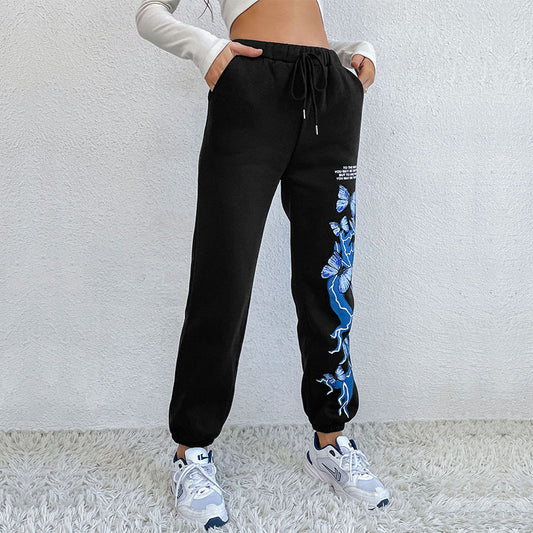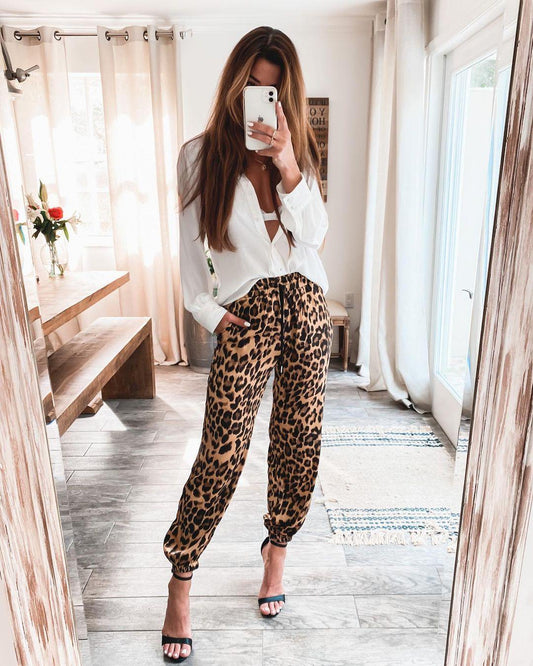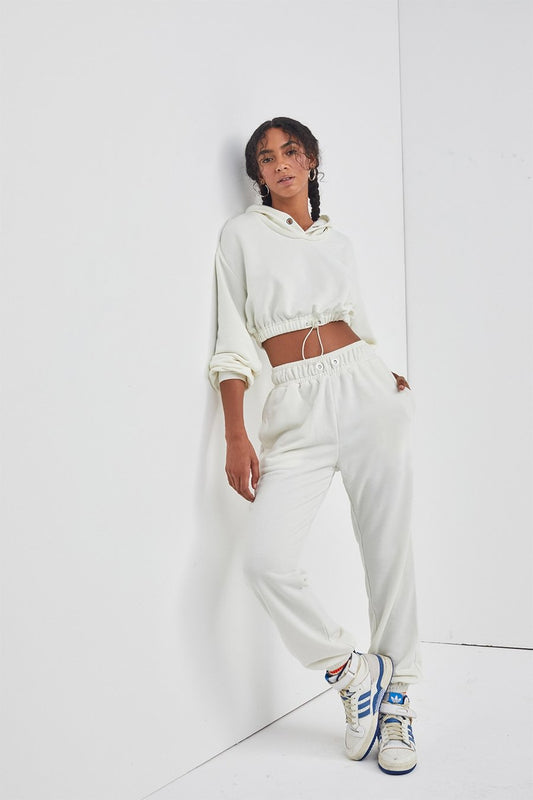-
Street Shooting High Waist Loose Straight Casual Trousers
Regular price $47.00 USDRegular priceUnit price / per$47.00 USDSale price $47.00 USD -
Lamb Wool Wide Leg Trousers
Regular price $62.00 USDRegular priceUnit price / per$62.00 USDSale price $62.00 USD -
Elastic Waist Wide Leg Straight Sweatpants
Regular price $52.00 USDRegular priceUnit price / per$52.00 USDSale price $52.00 USD -
Short Drawstring Loose Sweater
Regular price $69.00 USDRegular priceUnit price / per$69.00 USDSale price $69.00 USD -
High Waist Slimming Loose Casual Contrast Color Striped Trouser
Regular price $50.00 USDRegular priceUnit price / per$50.00 USDSale price $50.00 USD -
Brushed Hoody Fabric Sports Casual Stacked Pants
Regular price $30.00 USDRegular priceUnit price / per$30.00 USDSale price $30.00 USD -
Casual Elastic Lace Solid Color Trousers
Regular price $29.00 USDRegular priceUnit price / per$29.00 USDSale price $29.00 USD -
Solid Color Slim Elastic Waistband Letter Graphic Printed Sweatpants
Regular price $32.00 USDRegular priceUnit price / per$32.00 USDSale price $32.00 USD -
Popular Loose Floral Print Casual Pants
Regular price $25.00 USDRegular priceUnit price / per$25.00 USDSale price $25.00 USD -
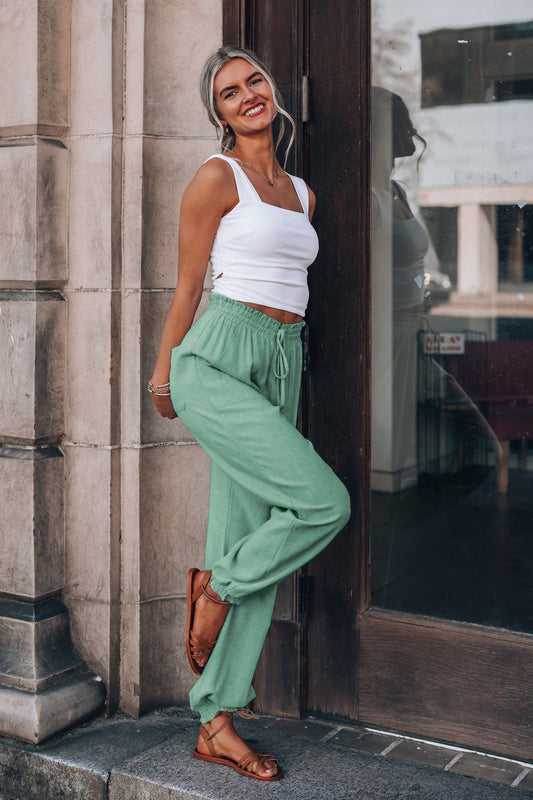
 Sold out
Sold outSolid Color Comfort Casual Trousers
Regular price $38.00 USDRegular priceUnit price / per$38.00 USDSale price $38.00 USDSold out -
Printing Loose Fitness Sports Harem Pants
Regular price $33.00 USDRegular priceUnit price / per$33.00 USDSale price $33.00 USD -
Printed Fashionable Elastic Waist Sports Casual Harem Pants
Regular price $34.00 USDRegular priceUnit price / per$34.00 USDSale price $34.00 USD -
Elastic Waist High Waist Wide Leg Ankle Length Pants
Regular price $35.00 USDRegular priceUnit price / per$35.00 USDSale price $35.00 USD -
Solid Color Alphabet Embroidery High Waist Lace Up Ankle Banded Sweatpants
Regular price $57.00 USDRegular priceUnit price / per$57.00 USDSale price $57.00 USDSold out -
Sports Street Trend Sweatpants
Regular price $29.00 USDRegular priceUnit price / per$29.00 USDSale price $29.00 USD -
Loose Casual Sports Drawstring Wide Leg Ankle Banded Pants
Regular price $29.00 USDRegular priceUnit price / per$29.00 USDSale price $29.00 USD -
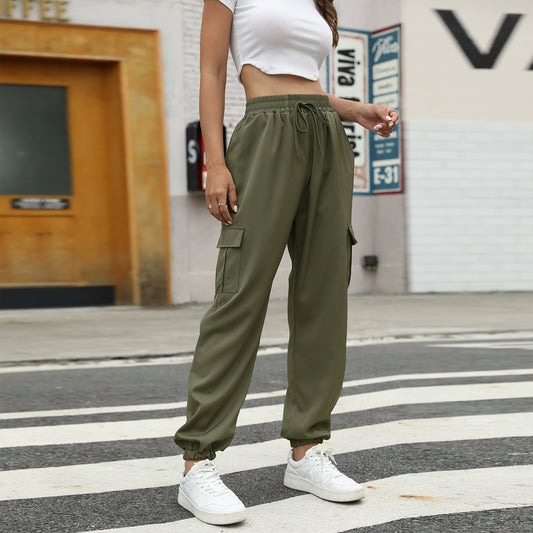
 Sold out
Sold outLacing Loose Cargo Pants
Regular price $39.00 USDRegular priceUnit price / per$39.00 USDSale price $39.00 USDSold out -
Elastic Solid Color Ankle Banded Pants
Regular price $38.00 USDRegular priceUnit price / per$38.00 USDSale price $38.00 USDSold out -
Solid Color Lace-up Ankle-Tied Wide Leg Casual Sports Pants
Regular price $39.00 USDRegular priceUnit price / per$39.00 USDSale price $39.00 USD -
Purple Thick Pure Cotton Looped Fabric Elastic Waist Drawstring Knit Casual Sweatpants
Regular price $48.00 USDRegular priceUnit price / per$48.00 USDSale price $48.00 USDSold out -
Solid Color Loose Hole Straight Lengthened Mopping Sports Pants
Regular price $40.00 USDRegular priceUnit price / per$40.00 USDSale price $40.00 USDSold out -
Printed Black Straight Trousers with Pockets
Regular price $37.00 USDRegular priceUnit price / per$37.00 USDSale price $37.00 USDSold out -
Leopard Print Forged Micro Elastic Trousers
Regular price $32.00 USDRegular priceUnit price / per$32.00 USDSale price $32.00 USDSold out -
Tide Loose Tappered Elastic High Waist Straight Harem Sweatpants
Regular price $58.00 USDRegular priceUnit price / per$58.00 USDSale price $58.00 USDSold out
Collection: Sweatpants
Sweatpants: A Comprehensive Product Category Overview
Sweatpants—also known as joggers, track pants, or athletic trousers—are an important part of modern casual wear. They are designed to be comfortable, flexible, and stylish. In this guide, you will learn what sweatpants are, which fabrics are used, how they are made, the different styles available, the size options, proper care methods, and market trends. This article provides clear, fact-based information with specific numbers and details so that you can make a well-informed purchase.
The main points covered in this guide include:
- Definition and key features
- Material composition and fabric details
- Design variations and style elements
- Production methods and quality checks
- Size options and fit standards
- Seasonal trends and practical uses
- Care and maintenance instructions
- Market position and customer demographics
- Technology improvements and future trends
- Production cost and economic factors
- History and design evolution
- Technical specifications and quality metrics
- Tips for choosing the right pair
- Final Overview
Sweatpants are made to offer ease and comfort. They have grown from simple gym wear into a fashion staple for many people around the world. This article explains each part of the product in clear and simple terms.
Definition and Key Features
Sweatpants are a type of casual trousers made from soft, flexible materials. They usually have an elastic waistband, often with a drawstring, and a relaxed, loose fit. Originally, they were used for sports and exercise, but today they are worn for many different occasions. Whether you are at the gym or on a casual outing, sweatpants offer comfort and a laid-back style.
The key features of sweatpants include:
- Comfort: They are designed with soft fabrics and a loose fit to allow free movement.
- Adjustable Waistband: Most sweatpants come with an elastic band and a drawstring so you can adjust the fit easily.
- Versatility: Originally for workouts, sweatpants now suit casual, leisure, and athleisure styles.
Recent studies show that sweatpants sales have increased by about 20% each year. This growth is due to the rising trend of athleisure and the desire for comfortable clothing that can be worn in many different settings.
Material Composition and Fabric Details
The choice of fabric is very important when it comes to sweatpants. Manufacturers usually choose materials that are soft, durable, and offer good stretch. The most common fabrics used include cotton, polyester, fleece, and small amounts of spandex or elastane.
Here are some details about the fabrics:
- Cotton: Natural cotton is popular because it is soft and allows the skin to breathe. In many sweatpants, cotton can be as high as 80% of the fabric.
- Polyester: This synthetic fiber is often mixed with cotton. A common blend is 50% cotton and 50% polyester, which gives the garment durability and helps wick moisture away.
- Fleece: Fleece is used for warmth. Sweatpants made from fleece have a soft, brushed interior and typically have a fabric weight between 250 and 350 grams per square meter.
- Spandex/Elastane: Added in amounts of 5% to 10%, these fibers provide stretch and help the sweatpants keep their shape.
Generally, the fabric weight of sweatpants ranges from 200 to 300 grams per square meter. This measurement affects how the garment hangs and how long it lasts. Manufacturers test these materials for strength, breathability, and colorfastness. For example, high-quality sweatpants usually maintain at least 90% of their original color after 20 wash cycles.
Design Variations and Style Elements
Sweatpants are available in many different styles to suit various needs and tastes. Extensive market research shows that they can be divided into several key categories:
- Classic Sweatpants: These have a traditional loose cut, an elastic waistband, and often a tapered leg.
- Joggers: These offer a more fitted design, often with ribbed cuffs at the ankles, and are popular for both casual and athleisure wear.
- Track Pants: Often designed with sporty details like side stripes or logos, these are ideal for athletic use.
- Fleece Sweatpants: Made for colder weather, these sweatpants have an extra soft, brushed interior for warmth.
- Fashion-Forward Styles: Some sweatpants include unique elements like zip pockets, adjustable drawstrings, or creative prints. These are aimed at buyers who want to combine comfort with a trendy look.
Additional style details include:
- Waistband Options: Some models have a simple elastic band, while others feature an adjustable drawstring.
- Pocket Styles: Options vary from basic side pockets to cargo pockets and zippered compartments, adding extra functionality.
- Leg Silhouettes: The cut of the legs can be tapered, straight, or loose, which affects both style and comfort.
- Finishing Details: Ribbed cuffs and hem details not only enhance the look but also help the sweatpants maintain their shape.
These design variations ensure that sweatpants can meet the needs of athletes, casual wearers, and those who appreciate athleisure style. Each style is backed by careful design research and consumer feedback.
Manufacturing Processes and Quality Control
The making of sweatpants involves advanced production techniques combined with strict quality control. Manufacturers use modern machines along with skilled workers to produce consistent, high-quality garments.
Key steps in the production process include:
- Computerized Cutting and Sewing: Over 80% of top manufacturers use computer-aided design (CAD) systems to cut the fabric precisely and ensure proper pattern alignment.
- Multi-Stage Quality Checks: About 95% of producers conduct thorough inspections at every stage, from the initial fabric inspection to the final product evaluation.
- Durability Testing: Standard tests ensure that sweatpants can handle at least 30 wash cycles while keeping 90% of their original color and shape. Tensile strength tests check that seams can withstand a force of at least 15 newtons.
Techniques like flatlock stitching are used to reduce friction and prevent chafing, which helps extend the life of the sweatpants. Automated cutting methods also reduce waste and ensure a uniform look across different batches.
Size Options and Fit Standards
Sweatpants are made to fit a wide range of body types. Many brands offer at least 10 different size options, and detailed size charts provide measurements for the waist, hips, and sometimes the inseam. For example, a typical size chart might include:
- XS: Waist – 26 inches, Hips – 32 inches.
- S: Waist – 28 inches, Hips – 34 inches.
- M: Waist – 30 inches, Hips – 36 inches.
- L: Waist – 32 inches, Hips – 38 inches.
- XL: Waist – 34 inches, Hips – 40 inches.
These charts help buyers find the best fit. Fabric tests often show that sweatpants offer between 10% and 20% stretch, ensuring that they move comfortably with the body while keeping their shape. Technical sheets that list fabric composition, stitch density (usually 20 to 30 stitches per inch), and elasticity data further assist consumers in making the right choice.
Seasonal Trends and Practical Applications
Sweatpants have become a year-round favorite due to their versatility and comfort. Sales data reveals that about 60% of purchases occur during autumn and winter, when layering is popular. In colder weather, sweatpants are often worn under jackets and hoodies to create a cozy, casual look.
In spring and summer, lighter sweatpants made from breathable fabrics like cotton blends are more popular, accounting for roughly 40% of seasonal sales. These models, which often have a minimal design, are ideal for warm weather, casual outings, and low-intensity workouts.
The benefits of sweatpants include:
- Everyday Comfort: Perfect for lounging, running errands, or relaxing at home.
- Athletic Function: Favored by gym-goers and sports enthusiasts for their flexibility and moisture-wicking properties.
- Athleisure Appeal: Increasingly worn as part of a stylish, everyday look that combines comfort with modern design.
Consumer surveys show that nearly 80% of users appreciate sweatpants for their ease of wear and versatile style.
Care and Maintenance Instructions
Proper care is essential to keep sweatpants looking good and lasting long. Manufacturers provide clear care instructions that help preserve the fabric and fit. Recommended guidelines include:
- Washing: Machine wash on a gentle cycle at temperatures between 30°C and 40°C to protect fabric texture and color.
- Drying: Air dry flat to avoid stretching; if necessary, use low-heat tumble drying as stated on the care label.
- Stain Treatment: Treat stains immediately with cold water and a mild detergent, which can improve stain removal success by up to 80%.
- Ironing: Use a low-temperature setting if needed; however, many sweatpants are designed to be wrinkle-resistant.
Following these care protocols can help sweatpants retain up to 95% of their original quality even after 30 wash cycles. Manufacturers advise against using harsh chemicals or fabric softeners that might damage the fabric’s stretch and color.
Market Position and Consumer Demographics
Sweatpants hold a strong position in the global fashion market and attract a wide range of buyers. Detailed demographic studies reveal that:
- Age Range: Approximately 50% of buyers are between 25 and 45 years old, 30% are between 46 and 60, and 20% are under 25.
- Usage Occasions: About 70% of consumers purchase sweatpants for casual and athletic purposes, while 30% choose them for leisure and athleisure styling.
- Pricing: Entry-level sweatpants typically range from $20 to $50, mid-range options from $50 to $100, and premium designs can exceed $100.
Retailers employ detailed pricing strategies that consider material quality, design complexity, and brand reputation. Surveys involving over 1,500 customers indicate that nearly 85% are satisfied with the comfort, fit, and overall style of their sweatpants.
Technological Advances and Future Directions
Technological innovations have greatly improved the design and production of sweatpants. Many top manufacturers now use advanced digital tools such as computerized pattern design, laser cutting, and automated stitching systems. More than 80% of leading companies have adopted these methods to reduce errors and speed up production.
Advances in fabric technology have resulted in better moisture-wicking, enhanced breathability, and improved stretch properties. Some companies are exploring eco-friendly fibers and recycled materials to lower environmental impact while still delivering high performance. Early research into smart textiles is underway; these innovative materials may include sensors that monitor body temperature and movement, potentially improving comfort by up to 15% compared to traditional fabrics. Additionally, digital printing techniques now allow for intricate, custom designs that remain bright even after many washes, with around 35% of new collections expected to feature such enhancements.
Economic Impact and Production Cost Analysis
The cost to produce sweatpants is influenced by several factors, including material expenses, labor, and investments in technology. Typically, material costs account for 50% to 70% of the overall manufacturing expense. On average, producing a mid-range pair of sweatpants costs between $10 and $25, while retail prices vary from $20 to $100 or more, depending on the design and quality. Consumer spending in this category has shown steady growth, with an annual increase of 5% to 8%. Transparent pricing models help ensure that high-quality sweatpants remain competitively priced.
Historical Evolution and Design Improvements
Sweatpants have come a long way from their beginnings as basic workout attire. In the 1960s, these garments were mainly used for sports and lounging. By the 1990s, sweatpants had become a popular choice in everyday fashion, reflecting a shift towards comfort and versatility. Continuous improvements in fabric technology, tailoring, and design have transformed sweatpants into essential wardrobe staples.
Designers now use precise measurements and customer feedback to improve the fit and overall style of sweatpants, making them suitable for many different occasions.
Technical Specifications and Quality Metrics
Manufacturers provide detailed technical data to ensure that every pair of sweatpants meets strict quality standards. These specifications include:
- Fabric Weight: Typically between 200 and 300 grams per square meter, which affects the garment’s drape and durability.
- Stitch Density: Generally 20 to 30 stitches per inch to ensure strong, long-lasting seams.
- Elasticity: Most sweatpants offer between 10% and 20% stretch for a secure yet comfortable fit.
- Durability: High-quality sweatpants retain at least 90% of their original color and shape after 30 wash cycles.
These technical metrics are standardized across production batches, helping consumers differentiate between entry-level, mid-range, and premium products.
Guidelines for Choosing the Right Pair
When selecting sweatpants, consider these simple guidelines to make an informed purchase:
- Fabric Quality: Choose sweatpants made from high-quality blends that offer excellent stretch, comfort, and durability.
- Size and Fit: Use detailed size charts with precise measurements for the waist and hips to ensure a perfect fit.
- Design Elements: Look at the style of the waistband, the configuration of pockets, and the leg cut to match your personal taste.
- Care Requirements: Follow the recommended maintenance instructions to keep your sweatpants in good condition.
- Intended Use: Decide if you need sweatpants for athletic activities, casual wear, or as part of an athleisure look, as this will guide your choice of fabric and style.
Detailed product descriptions and technical sheets from trusted brands can help you choose the right pair that meets your needs.
Final Overview
Sweatpants, also known as joggers or track pants, are a cornerstone of modern casual wear. They combine comfort, style, and practicality in one versatile garment. Made from high-quality fabrics such as cotton blends, polyester, and spandex, sweatpants offer excellent stretch and durability. Advanced production methods, including computerized cutting and multi-stage quality control, ensure that every pair meets strict standards.
With a wide range of styles—from classic and relaxed to modern and fitted—and comprehensive size options supported by detailed measurement charts, sweatpants cater to a diverse audience. Clear care instructions help maintain their appearance and longevity, while economic factors show steady market growth and competitive pricing. Continuous design improvements and technological advances have transformed sweatpants from basic athletic wear into essential wardrobe staples.
This comprehensive guide has provided fact-based insights on material composition, manufacturing processes, design variations, size options, care instructions, market trends, technical specifications, and consumer selection tips. With this information, consumers can confidently choose sweatpants that deliver both style and lasting value.







